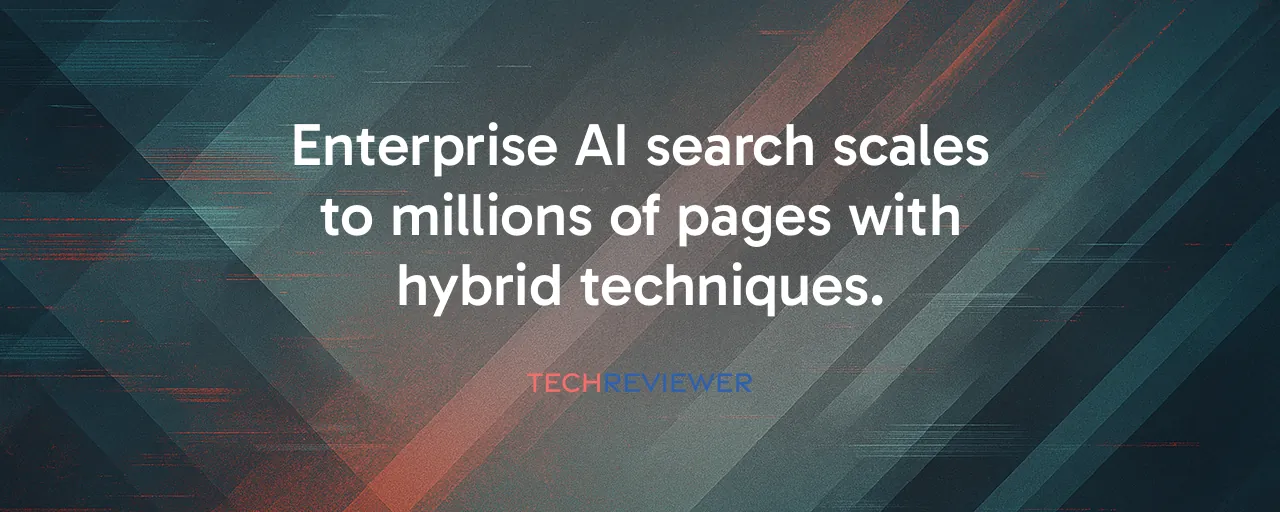The Leap to Enterprise-Scale AI Search
Searching through a few hundred documents is one thing, but what happens when you're dealing with millions of pages? Enterprises like Usul AI, with its 9 million-page repository, and a legal AI system managing 4 million pages, have pushed AI search systems to their limits. These massive datasets demand more than basic setups. They require clever techniques to deliver accurate, fast results that users can trust. The stakes are high: businesses rely on these systems for everything from legal analysis to customer support, and any misstep can mean lost time or costly errors.
The journey from small-scale prototypes to production-grade systems reveals a gap. Simple frameworks like LangChain or LlamaIndex work well for testing with a few hundred documents, but they often falter when scaled up. Developers have learned this the hard way, with real-world deployments exposing issues that lab tests missed. The good news? Innovations like multi-query generation and hybrid search are closing that gap, helping AI systems handle the complexity of enterprise needs with precision.
Why Simple Search Falls Short
Traditional search methods, like keyword matching, struggle with the nuances of human queries. AI search systems aim to understand intent, not just match words. But scaling this to millions of documents introduces challenges. For instance, a single query might miss critical information if it's phrased too narrowly. To solve this, engineers now generate multiple query variations from a single user input, casting a wider net to capture relevant results. These variants are processed in parallel, then combined using smart ranking algorithms to prioritize the best matches.
Another hurdle is technical language. Pure semantic search, which relies on understanding meaning, often stumbles on jargon or acronyms. That's where hybrid search shines. By blending semantic understanding with traditional keyword techniques like BM25, systems can handle both general queries and precise terms. This approach has proven effective in real-world cases, boosting accuracy for specialized vocabularies in legal or technical documents.
Real-World Wins and Lessons
Take Usul AI's experience with 9 million pages. Their initial system, built on standard frameworks, delivered lackluster results. After months of refinement, they adopted a multi-query approach by generating three diverse query variants in a single LLM call with prompting to ensure variation, then performing parallel searches and combining results using reciprocal rank fusion. This, paired with a reranking step that evaluates dozens of retrieved chunks to select the top 15, transformed their system's performance. The legal AI enterprise with 4 million pages achieved strong results by using hybrid search to tackle complex legal terminology, ensuring precise answers for users.
These cases highlight a key lesson: customization matters. Generic approaches, like splitting documents by character count, often break context, leading to incoherent results. Instead, respecting document structure, keeping paragraphs or sections intact, preserves meaning. Adding metadata, like document titles or dates, further sharpens answers. Both Usul AI and the legal AI system found that these tailored strategies dramatically improved user satisfaction.
Balancing Speed, Cost, and Quality
Scaling AI search isn't just about accuracy; it's about efficiency too. Generating multiple queries and reranking results can slow things down and drive up costs, especially with large datasets. For example, vector database queries and reranking models demand significant computational power. Enterprises must weigh these costs against the benefits of precise answers. Smart query routing helps by directing simple questions to faster pipelines while reserving heavy processing for complex searches.
Despite these advances, challenges remain. Evaluating system quality is tricky, as standard metrics don't always capture what users value, like answer tone or context. Human feedback loops, though costly, are often the only way to ensure quality. Maintenance is another hurdle, as document collections grow and user needs shift, requiring constant tuning. Yet, with the RAG market expected to grow from 1.96 billion USD in 2025 to 40.34 billion USD by 2035, the investment is paying off for many.
What's Next for AI Search
The rapid rise of AI search in enterprises, now powering 30 to 60 percent of AI use cases, shows no signs of slowing. Companies are moving beyond build-it-yourself solutions toward managed platforms from providers like Azure and AWS, which simplify deployment. Specialized tools, like Cohere's reranking models or Pinecone's vector databases, are also gaining traction, offering tailored solutions for specific needs.
For businesses, the payoff is clear: 42 percent report significant productivity gains from AI search systems. But success hinges on learning from real-world deployments. Engineers must prioritize custom chunking, hybrid search, and reranking to meet user expectations. As adoption grows, the focus will shift to balancing customization with cost, ensuring these systems remain practical while delivering answers that rival traditional search engines.
